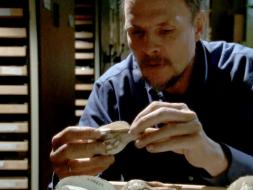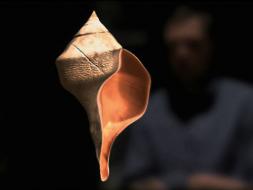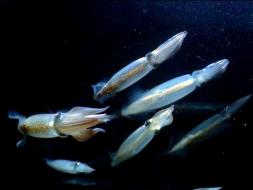Few things in nature are as beautiful and fascinating as seashells, with their graceful spirals, marvelous shapes, and dazzling colors. However, the handsome homes of snails (gastropods) are built only at great cost. Creating a shell requires a huge investment of energy and building materials, so there must be a big payoff for the snail. That payoff, of course, is protection. Snails build their expensive shells not for beauty, but to defend their soft bodies against the sharp claws of hungry crabs and lobsters, and the strong jaws of predatory fish.
Here are some good shell traits for thwarting predators:
- Thick walls – stout, heavy armor is the most basic defense, but costly to build
- Protrusions – spikes and spines, flanges and fronds: These extensions are an economical way to distance claws and jaws from the central cockpit where the soft animal resides; they also make for an uncomfortable mouthful
- High Spires – the shells of most snails are twisted, but some are “flat” coils whereas others spiral out to a tall point like soft-serve ice cream; the latter are harder to swallow and also put some distance between the attacker and the wider part of the shell that houses the snail
- Narrow Aperture – the shell’s opening is the place most vulnerable to attacks; a slit-like opening is tougher for predators to infiltrate
- Long Siphonal Canal – Many snails possess a siphon, a snorkel that sticks out into the water through a siphonal canal in the shell. They use the siphon to bring water in over their gills and also to taste the water. A long, slender siphonal canal is less vulnerable to entry by predators, and also permits the snail to burrow without suffocating
- Thickened Aperture Margins – the outer rim or “lip” of the aperture is especially vulnerable to the shell-breaking grip of attackers; the thicker the better
Your Mission: Study the armor from different species of gastropods!
In this activity from Shape of Life, you’ll study the elaborately whorled, sculpted, and ornamented shells of gastropods not as objects of beauty, but as artifacts born of an evolutionary trade-off: They are costly to build and carry around, yet essential for survival in a dangerous ocean.
There are two versions of this resource:
- The high school version introduces the concept of an evolutionary arms race (coevolution) and reinforces the Darwinian principle of “form follows function.”
- The middle school version emphasizes the concepts of animal adaptation and predator avoidance. In both versions, there is a hands-on activity with shells, and written analysis interpreting the fossil record.
This instructor’s guide applies to both the middle school and high school version of the activity.
The lesson plans and instructor’s guide were created for Shape of Life by Kevin Goff.
Survey Ecosystem Health On A Virtual Coral Reef
Shape of Life Videos To Watch With This Resource

“Geerat Vermeij, Evolutionary Biologist: Reading A Shell’s Story” (7.5 min)

“Mollusc Animation: Shell Repair” (1.5 min)

“Molluscs: The Survival Game” (15 min)
Next Generation Science Standards
Middle School
MS-LS2-4 Construct an argument supported by empirical evidence that changes to physical or biological components of an ecosystem affect populations.
MS-LS4-2 Apply scientific ideas to construct an explanation for the anatomical similarities and differences among modern organisms and between modern and fossil organisms to infer evolutionary relationships.
MS-LS4-6 – Use mathematical representations to support explanations of how natural selection may lead to increases and decreases of specific traits in populations over time.
High School
HS-LS2-2 Use mathematical representations to support and revise explanations based on evidence about factors affecting biodiversity and populations in ecosystems of different scales.
HS-LS4-1 Communicate scientific information that common ancestry and biological evolution are supported by multiple lines of empirical evidence.
HS-LS4-2 Construct an explanation based on evidence that the process of evolution primarily results from four factors.
HS-LS4-4 Construct an explanation based on evidence for how natural selection leads to adaptation of populations
Meet the Writer
About Shape of Life
@ShapeofLifeorgShape of Life offers free and easy to access classroom media and resources depicting the evolution of the animal kingdom on planet earth. Students and educators from all over the world explore animal adaptation, animations, and behaviors along with the amazing scientists who bring their stories to life. Shape of Life resources are NGSS-aligned and include lesson plans, readings, illustrations and activities that inspire a deeper dive into the origin of our existence.

